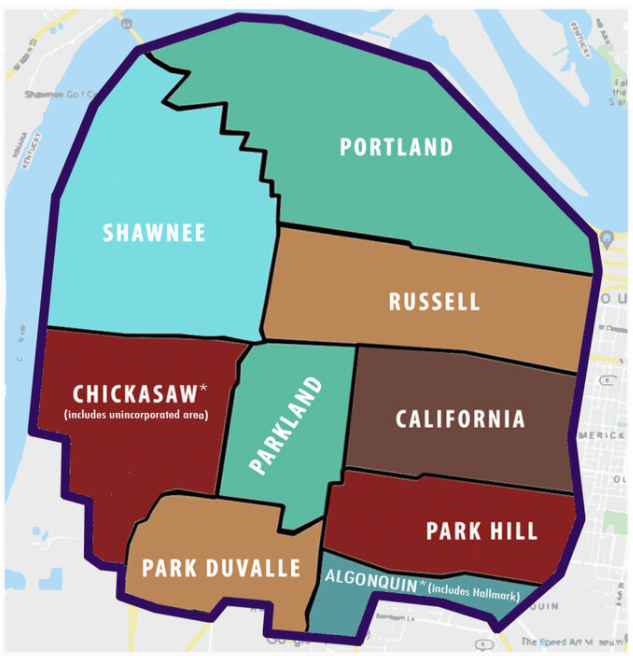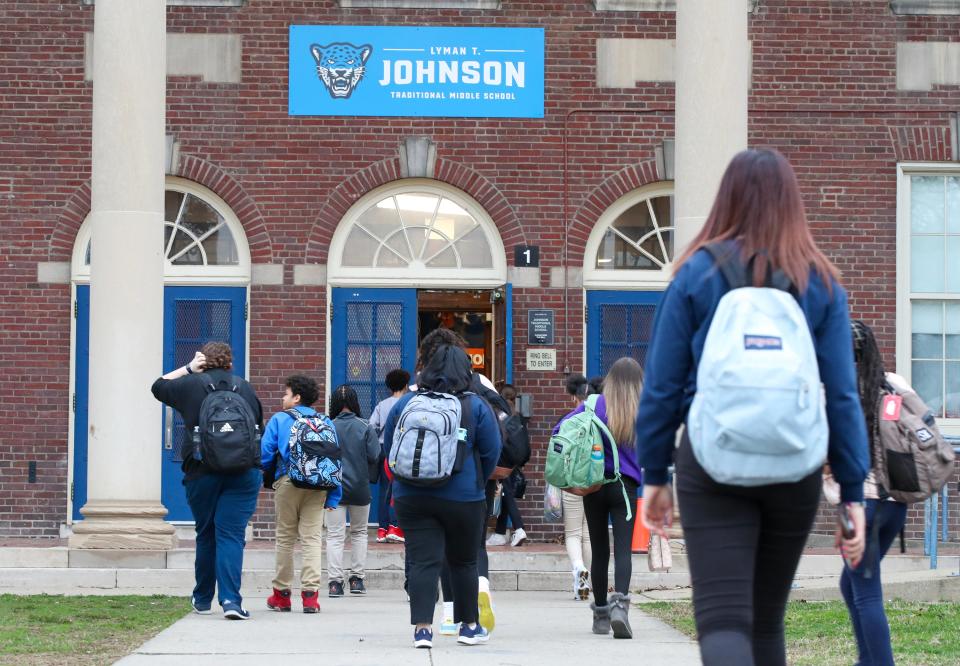Which JCPS magnet schools would be most impacted by ending busing?
If Jefferson County Public Schools ends bus transportation for students in magnet schools and programs, some schools will be hit much harder than others, potentially losing funding and extracurricular activities.
Of the JCPS schools that are wall-to-wall magnets, an analysis by The Courier Journal found that schools in Louisville's West and South Ends would face the most turmoil, while magnets serving more affluent, white students are likely to see less of an impact.
But JCPS officials say ending bus transportation for magnet students is the best option for the overall student population, especially considering that Black, brown and impoverished students in regular schools are missing class time because of the bus driver shortage.
Superintendent Marty Pollio will recommend board members vote in favor of this change at their Tuesday meeting.
"There is no perfect or easy solution to our transportation situation, and we have spent months digging into many possibilities for what transportation could look like next school year," said JCPS spokeswoman Carolyn Callahan. "Eliminating magnet transportation is the most equitable option with the least negative impact on students of color."
At Whitney Young Elementary in the Shawnee neighborhood, nearly 3 out of 4 students (73%) are bus riders that live in impoverished households, according to data provided to The Courier Journal through an open records request. A small portion of those students could still qualify for busing due to federal mandates that the district bus homeless students and some students with disabilities.
Young Elementary would be left with just 50 students if the 151 students who are economically disadvantaged and depend on bus transportation leave the school.
The magnet schools with the second and third highest rates of economically disadvantaged bus riders are also in the West End (72% at Central High and 60% at Johnson Traditional Middle).

All three of these schools largely serve Black and brown student populations.
Butler Traditional High, which is in Shively, is the only other school where more than half of its students (57%) fall into this category.
Students are classified as economically disadvantaged if they live in homes earning below the federal poverty line. While some students will find alternative means to get to their schools if magnet transportation ends, research has shown transportation is an integral part of achieving socioeconomic diversity within magnets. Students from impoverished households are more likely to have to choose another school altogether.
More: ‘Central as we know it will be gone’: JCPS magnet schools fear future without busing
The schools least likely to face a major drop in enrollment are Hawthorne Elementary, Greathouse/Shryock Traditional and duPont Manual High, where about 19% of their students are bus riders from impoverished backgrounds.
Each of these schools serve a student population that is at least 40% white, with a smaller percentage of economically disadvantaged students compared to the overall district rate. Less than 20% of their students are Black at each, while Black students make up 37% of JCPS.
A significant portion of school funding is based on enrollment, but so is staffing. If schools lose a lot of students, there will also be a drop in the number of teachers. That could impact which magnet programs — and potentially which extracurricular activities — can be offered, depending on which teachers are reassigned to other schools.
The district has several additional magnet programs within resides schools whose students would also not receive busing next year if the district ends bus transportation for magnet students. The Courier Journal's analysis of bus riders from impoverished households did not include these programs.
Critics of the proposal to end magnet busing say it will lead to more segregation within western Louisville and contradicts the promises made by district leaders under the new student assignment plan.

Lyndon Pryor, president of the Louisville Urban League, said the district is being forced to deal with the repercussions of decisions made and supported by lawmakers throughout the city's history that have led to segregation and poverty, and now have to choose "between a lot of very bad options."
This option though, Pryor said, doesn't align with the mission of the district's new student assignment plan that began this year. Part of that plan was supposed to address JCPS' near five-decade-old busing program that placed a disproportionate burden on city’s Black families living in the West End.
Taking busing away from magnet students will create further disparities among white and Black and poor and affluent students, Pryor said.
District leaders, however, emphasize that the current system is already disproportionately impacting Black, brown and impoverished students.
The district buses about 44,000 students of color and most are missing an average of 14 minutes of instruction each day. "Some are arriving more than an hour late on some days," according to Callahan. She continued by pointing out that there are far more Black students bused to resides schools (about 19,000) compared to about 6,000 Black magnet bus riders.
Callahan also said the district is working with TARC "to ensure there will be public transportation options for many of these students. We will also ensure that the transfer to their resides school is easy for those who can no longer attend a magnet school or program because of the bus driver shortage."
Ahead of next week's school board meeting, Board Chair Corrie Shull declined to comment on the proposed magnet busing changes.
"I’m not making comments about that to the media at this time," Shull told The Courier Journal Thursday.
Gail Strange, the new board member representing District 1 - which falls in west Louisville - did not respond to repeated requests for comment.
Of the 18 wall-to-wall magnets, 10 fall within Strange's district — representing more than 50% of the students included in the analysis.
Joe Marshall, who represents District 4 where Butler is located, said he will support the administration in what they think is best aligned with academic goals.
"The Board is in the process of setting new academic goals that are aligned with the communities' vision and values. Whichever plan administration deems necessary to achieve those goals will have my full support," Marshall said.
How many impoverished bus riders are at JCPS' magnet schools?
At Hawthorne Elementary, 19% of the school population.
At Greathouse Shryock Traditional Elementary, 19% of the school population.
At Dupont Manual High, 19% of the school population.
At Coleridge-Taylor Montessori Elementary, 27% of the school population.
At Lincoln Elementary Performing Arts, 30% of the school population.
At Audubon Traditional Elementary, 32% of the school population.
At Brandeis Elementary, 39% of the of the school population.
At Louisville Male High, 39% of the school population.
At Barret Traditional Middle, 39% of the school population.
At Carter Traditional Elementary, 39% of the school population.
At Schaffner Traditional Elementary, 44% of the school population.
At Jefferson County Traditional Middle, 47% of the school population.
At Foster Traditional Academy, 48% of the school population.
At Western Middle School for the Arts, 50% of the school population.
At Butler Traditional High, 57% of the school population.
At Johnson Traditional Middle, 60% of the school population.
At Central High, 72% of the school population.
At Young Elementary, 73% of the school population.
Contact Krista Johnson at kjohnson3@gannett.com.
This article originally appeared on Louisville Courier Journal: Which JCPS magnet schools would be most impacted by ending busing?

